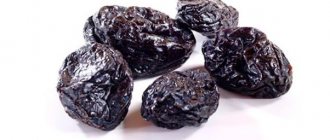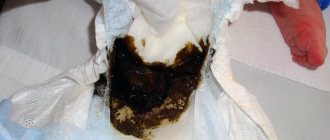Causes of white diarrhea in children
Experts cannot always accurately determine the reasons for the appearance of such bowel movements and give an answer as to what kind of stool in a child can be considered normal. Its character is influenced by a fairly large number of factors: age, nutrition, medication use and much more.
The feces of a newborn baby can be of any color and consistency - yellow, white, brown, liquid and mushy. Pediatricians say that light-colored stool is often observed in babies during the period when they are teething. This is physiological diarrhea, which is not dangerous and goes away on its own.
It is much worse if white diarrhea is caused by intoxication (a condition equivalent to poisoning, which develops under the influence of various poisons and toxins that enter the body from the external environment) or any serious diseases.
Bile duct diseases
Biliary dyskinesia in a child is a failure of the process of bile formation and bile secretion. Stagnation of bile is formed, which leads to poor functioning of the gastrointestinal tract, the motor activity of the gallbladder and biliary tract is disrupted without their organic changes.
Blockage of the bile ducts is often accompanied by loose stools and white feces. The normal color of feces is ensured by the presence of bile acid impurities in them. When this substance is not released into the duodenum in the required volume, the color of the stool gradually changes and becomes lighter, even white.
With biliary dyskinesia, the absorption of nutrients, especially fats, deteriorates. After all, in order for fats to be better digested, they must be broken down into smaller “droplets”, and this function is performed by bile. Biliary dyskinesia is usually accompanied by reactive pancreatitis - an inflammatory process in the pancreas.
Cholangitis is an inflammation of the bile ducts that occurs against the background of obstruction of the biliary tract or bacterial infection of the bile itself. It can also cause white diarrhea in a child.
Cholecystocholangitis in children is usually of an infectious nature: bacterial, viral, fungal. May be of toxic origin. The connection of this inflammation of the biliary tract with appendicitis, scarlet fever, dysentery, sepsis, sore throat, chronic tonsillitis, sinusitis, dental caries, infectious hepatitis (Botkin), helminthiasis, tuberculosis intoxication has been proven.
Cholecystocholangitis in children occurs more often as a primary chronic disease. It requires long-term treatment with mandatory medical examination of patients for 3-4 years.
Taking medications
The intestinal microflora is disrupted for various reasons. Most often, dysbiosis develops after prolonged use of antibiotics; in rare cases, this causes white diarrhea.
Drugs that interfere with liver function can cause white diarrhea in a child:
- Tetracycline;
- Aspirin;
- Ibuprofen;
- Paracetamol;
- Methotrexate.
Diarrhea after antibiotics in a child is caused by the same circumstance - the death of beneficial microflora. Antibacterial drugs in many cases become indispensable in the treatment of diseases of the upper respiratory tract, but at the same time they can affect both pathogenic microorganisms and beneficial ones with equal force.
Microflora disturbance
Modern pediatricians believe that dysbiosis is not a disease, but a condition of the mucous membranes in which the balance of the microflora is disturbed. Dysbacteriosis in children under one year of age is a very common phenomenon. The work of the gastrointestinal tract of a newborn is still just getting better, and there may not be enough beneficial bacteria for stable intestinal function.
If a child has taken antibiotics, the natural microflora of his intestines is disrupted, because antibiotics kill any bacteria, without distinguishing whether they are pathogenic or beneficial. It can also be caused by poor diet, stress and other factors. Symptoms in a child, including white diarrhea, with dysbacteriosis appear quite clearly and cause discomfort, especially for infants.
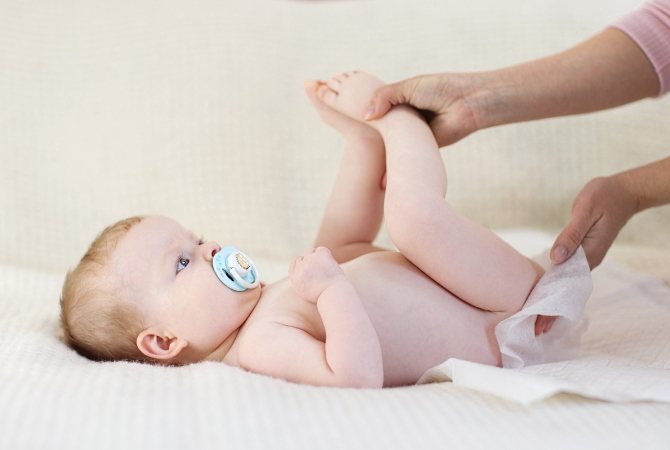
Colitis
This disease is inflammatory and is characterized by dystrophic changes in the large intestine. Among its symptoms are periodic abdominal pain, bloating, diarrhea or frequent urge to defecate, chills, dehydration, and blood clots in the stool.
Treatment of colitis can be surgical and therapeutic. Surgery is indicated if other measures have failed and the child continues to suffer from pain and diarrhea. In addition, surgery is prescribed if a diagnosis of ischemic colitis, Crohn's disease or nonspecific colitis is made.
Colitis in children often occurs due to dietary errors, poisoning and lack of sufficient fluids drunk during the day. It must be remembered that the disease is quite simple to prevent; you just need to monitor what the child eats and drinks.
Helminthiasis
Worm infestations are one of the most common diseases in childhood. Parents often underestimate their danger, but helminths in children provoke not only an insufficient supply of nutrients to the body, but also cause allergic reactions, chronic intoxication, reduce immunity and contribute to the development of diseases of the gastrointestinal tract. Childhood is a period when stable immunity has not yet been formed, which significantly increases the likelihood of infection with parasites. And the methods of infection by worms depend on the characteristics of their development cycle.
The first signs, as a rule, are detected 2-4 weeks after the eggs enter the body. They vary depending on the number of parasites, the state of the child’s immunity, and the type of helminths.
In most cases, helminthiases in childhood are diagnosed through annual preventive stool examinations for worm eggs. In case of negative stool tests, a repeat test is recommended after 2-3 weeks.
Rotavirus infection
It is characterized by symptoms similar to respiratory diseases - runny nose, headache, cough and sore throat. Fever and intoxication are also possible.
Typically, this infection causes a change in the color of the child's stool - it becomes white-yellow or whitish. The child loses his appetite, becomes sleepy and capricious. To quickly relieve all symptoms, you should seek medical help.
Hepatitis
Hepatitis in newborns and children in the first months of life refers to inflammatory processes in the liver caused by various infectious agents.
There may be no symptoms of hepatitis, but if parents notice dark urine in their child, they should be wary, because this is a sure sign of the disease. A child's stool with hepatitis is not just white, but has a grayish tint.
An accurate diagnosis can be established only after examination and laboratory tests. The disease discovered in a child can be cured - it is possible to completely restore all lost liver functions if adequate therapy is selected.
Dehydration
Dehydration, which often occurs in children due to acute respiratory viral infections and intestinal infections, is a dangerous condition that can threaten the health and even the life of the child. Dehydration is a sudden loss of fluid in the body or insufficient intake.
The main cause of rapid dehydration is vomiting and diarrhea, which usually accompany intestinal infections, rotavirus, and exacerbation of gastrointestinal diseases. In children, dehydration occurs quickly - the younger the child, the faster a life-threatening condition can occur.
Dehydration is dangerous for the entire body as a whole and for each organ separately. When fluid is lost, the functioning of the main systems - the kidneys, brain and heart - is disrupted, which can lead to convulsions, heart rhythm disturbances, loss of consciousness and other life-threatening consequences. Therefore, if a child has white diarrhea, it is worth considering whether he is getting enough fluids.

White diarrhea, diarrhea due to medications
In chronic diseases of the pancreas or liver, the color of stool may change due to medications. These medications have an effect on the gastrointestinal tract:
1 Allopurinol and other drugs for gout;
2 Drugs for the treatment of tuberculosis (they contain fats);
3 Medicines for epilepsy (valproic acid);
4 Paracetamol, Ibuprofen and other non-steroidal anti-inflammatory drugs (have side effects in case of overdose);
5 Methotrexate and other steroid drugs that act on the endocrine system;
6 Tetracyclines;
7 Augentin and other antifungal drugs.
If you stop taking the medicine, the diarrhea should stop within three or four days. If it is impossible to refuse this drug, then you should consult a doctor and describe the adverse reactions. There is no need to stop therapy on your own, since all the medications mentioned help fight the patient’s current problems, and abruptly stopping them will not help cope with the disease. The specialist will change these medications to similar ones that do not cause similar effects or prescribe additional medications to help the functioning of the liver, gallbladder or pancreas, based on where exactly the disorder occurred. Typically, adults should not experience any problems with their digestive tract, so if there are any problems, you should be examined.
Associated symptoms
Often, white diarrhea in a child is accompanied by fever and vomiting. Such symptoms clearly indicate that the child may be diagnosed with rotavirus infection, influenza, hepatitis, or a disorder of the pancreas. All these ailments have a direct impact on the digestive process and the color of feces.
Parents should be alert to the following accompanying symptoms:
- baby weight loss;
- elevated temperature;
- changed color of urine;
- yellow tint to the skin and whites;
- abdominal pain;
- lack of appetite.
Gray adult diarrhea
Each of us, at least once in our lives, was bothered by diarrhea, which could happen at the most inopportune moments. Diarrhea is a pathology that is accompanied by a critical disorder of the digestive system.
The body copes with weaker types of disorders on its own, almost imperceptibly for a person, however, with diarrhea, the body attempts to get rid of the hostile environment within itself by completely cleansing the stomach and intestines. In this case, the stool has a liquid consistency and occurs more than 3 times a day.
The presence of liquid is explained by problems with the absorption of liquid by the walls of the digestive system. That is why the masses of feces are diluted and quickly excreted.
Very often, one disorder is not enough, since nausea, vomiting, fever, weakness and abdominal pain may also be present.
It should be remembered that diarrhea is a very dangerous disease, because due to impaired absorption of liquid by the walls of the digestive system, the body stops receiving water, vitamins, minerals and other vital components of food.
Diarrhea can begin at any time and last from several days to several months. The form of diarrhea becomes acute if the diarrhea continues for more than two weeks, which implies a more detailed study and a change in treatment methods.
articles:
Causes of diarrhea, what can cause diarrhea?
The following factors can contribute to the appearance of loose stools:
1 Infection with viruses or bacteria can cause diarrhea;
2 Eating spoiled food that contains pathogenic bacterial flora;
3 The presence of a large number of stressful situations in life;
4 Significant overeating can cause diarrhea;
5 Certain form of allergy;
6 Chronic diseases sometimes cause symptoms such as diarrhea;
7 Parasites in the body, in particular worms;
8 Individual intolerance to certain foods, or more precisely, their enzymes;
9 Insufficiently washed food products of plant origin;
10 Drinking water of poor quality can cause frequent loose stools;
11 Poor nutrition, when the body lacks certain elements;
12 Long-term use of antibiotics or other drugs that suppress microflora;
13 Various diseases of the gastrointestinal tract, such as gastritis, colitis and others;
14 Poisoning with a large number of toxins, for example, poisonous mushrooms or chemicals;
15 Eating large amounts of fiber, for example, with vegetables and fruits, which in itself enhances the contractile function of the digestive system.
The main types of diarrhea, what kind of diarrhea can it be?
Each of the above causes of diarrhea causes one of the following types of diarrhea:
1 Exudative, occurring in diseases of the gastrointestinal tract;
2 Medication, typical when using drugs that disrupt the normal intestinal microflora;
3 Alimentary, which occurs when an allergy or malnutrition factor is present;
4 Infectious, appearing along with infection of the body by certain viruses;
6 Toxic, caused by the consumption of poisons and chemicals;
7 Dyspeptic, when there is enzyme deficiency.
It should be noted that the causes of diarrhea are determined by certain characteristics that are different for each type, by which one or another type of diarrhea can be identified. Thus, the consistency, smell, color, presence of impurities and others can be different.
Brown diarrhea, why brown diarrhea appears, reasons
Brown color in shades from standard to dark brown is considered normal for humans, but this applies to stool with an exceptionally dense stool consistency.
As mentioned earlier, the shade or color of feces depends on the food consumed, so the presence of dense brown feces indicates the normal course of all digestive processes.
The appearance of liquid brown or brown stool may indicate infection with bacteria or parasites in the form of worms. More precisely, diarrhea does not occur from the presence of these bacteria and parasites, but from the products of their vital activity.
It should be noted that the presence of dark brown stool indicates the predominant consumption of meat and its derivatives. The stool becomes light brown when eating a large amount of food of the vegetable or dairy categories. It is considered the most dangerous if an almost beige color of the stool has become noticeable, which indicates critical disturbances in the functioning of the liver.
Gray color diarrhea, causes of gray color diarrhea
If an adult begins to suffer from diarrhea, in which the stool takes on a gray tint, then it is necessary to sound the alarm immediately, as this may indicate dangerous liver diseases, in particular hepatitis and even cirrhosis. Also, the gray color of stool during diarrhea can signal pathologies of the bile ducts, their blockage, which can lead to a cessation of the supply of bile to the intestines. The following deviations may be prerequisites for the development of this type of event:
1 Problems with the gallbladder, in particular cholecystitis;
2 Presence of stones or cancer in the gallbladder, bile ducts or liver;
3 Various inflammatory phenomena similar to pancreatitis;
4 Crohn's disease.
In addition to the above, gray stool during diarrhea can be caused by eating large amounts of very fatty foods. Also, internal antimicrobial and antifungal drugs can affect the gray coloration of feces.
Red diarrhea, why red diarrhea may appear
The predominance of red color in liquid and even dense feces during diarrhea is the most dangerous phenomenon, since in this case it may indicate the presence of hidden internal bleeding, requiring immediate medical intervention.
Most often this is a consequence of the destructive effects of the development of malignant tumors in the digestive organs. This can also be caused by a variety of acute inflammatory processes that disrupt the integrity of the mucous membranes.
It should be noted that the intensity of the shade can determine the approximate source of bleeding or inflammation.
Thus, the dark red, almost black color of the diarrhea indicates that there is damage to the right half of the colon, and if the stool is bright red, one can judge that there is damage to the lower region of the intestine. A weak red color can usually appear with hemorrhoids or anal fissures.
However, you should not sound the alarm prematurely, since the first thing you need to do is remember what you ate in the last 24 hours. If your diet included tomatoes, beets or calcium-containing preparations, you can calm down until your next trip to the toilet.
First aid
Adequate and rational treatment of white diarrhea in a child includes several measures that help at the first signs of diarrhea:
- Diet - eat biscuits, rice porridge and drink sweet tea.
- Combating dehydration - to restore the balance of fluids and salts in the body, special mixtures for oral administration are used.
- The medicine for diarrhea is an intestinal sorbent (for example, Smecta or Phosphalugel).
It is necessary to call an ambulance if a child has signs of dehydration due to upset bowel movements.
The best medicines for diarrhea that parents can use are sorbents to remove toxins from the body:
- Smecta. Up to a year - 1 sachet per day, 1-2 years - 1-2 sachets per day, 2-12 years - 2-3 sachets per day.
- Polyphepan. For infants - 0.5-1 teaspoon, 1-7 years - 1 dessert spoon, from 7 years and older - 1 tablespoon per dose 3-4 times a day.
- Activated carbon. Children under seven years of age - five grams three times a day, older ones - at the rate of 1 tablet per 10 kg of body weight.
- Polysorb. The dosage is also calculated depending on the baby's weight.
- Neosmectin. For children under 12 years old, the contents of the sachet are dissolved in 50 ml of liquid, for children under 1 year old - 1 sachet per day, from 1 year to 2 years - 2 sachets per day, for children over 2 years old - 2-3 sachets per day.
- Enterosgel. For children from 5 to 14 years old, despite the safety of the medicine, its use is not recommended for longer than two weeks.
Treatment depending on the age of the child
To replenish lost fluid in the body, it is necessary to use Regidron or Humana Electrolyte anti-diarrhea medications. Rehydration for diarrhea at home can be done by diluting a teaspoon of salt, the same amount of sugar and half a spoon of soda in a liter of boiled water. This solution is given to children without restriction at any age.
Rice water and starch do not have any age restrictions for children. It should be brewed with just water or made into jelly, but only slightly sweetened and do not use fresh berries and fruits, but only dried ones. Such remedies can quickly eliminate diarrhea.
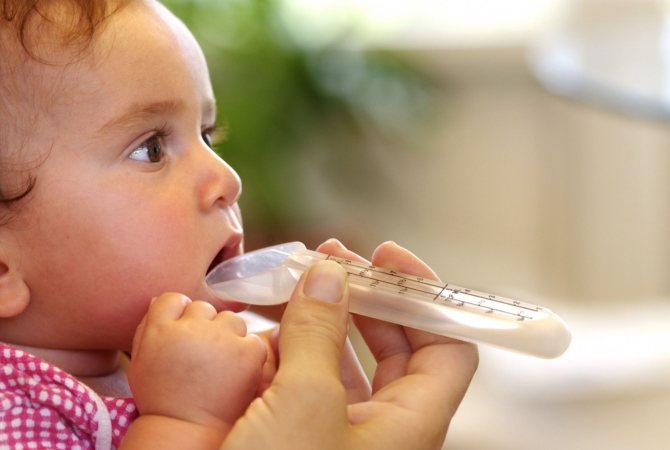
Drugs
Remedies for diarrhea are divided into five groups:
- Probiotics are drugs that are used to relieve symptoms of dysbiosis, one of which is diarrhea:
- Linex – capsules, price – from 400 rubles;
- Bifidumbacterin - powder, price - from 80 rubles.
- Medicines aimed at slowing down the wave-like contractions of the walls of the rectum (peristalsis):
- Imodium – capsules, price – from 250 rubles;
- Loperamide - syrup (it is prescribed to children in this form of release), price - from 25 rubles.
- Antibiotics that eliminate the cause of diarrhea - intestinal infections:
- Levomycetin - tablets, powder, price - from 76 rubles. (children from 3 to 16 years old are prescribed 25 mg per kilogram of weight twice a day);
- Metronidazole – tablets, solution for infusion, price – from 40 rubles. (take one tablet twice a day);
- Amoxicillin - tablets, powder for injection, price - from 27 rubles. (children under 5 years old need to take 0.125 g of the drug three times a day).
- Enterosorbents are means for binding exogenous and endogenous substances in the gastrointestinal tract by increasing adsorption, absorption, complexation and ion exchange:
- Activated carbon - tablets, powder, price - from 10 rubles. (taken at the rate: 1 tablet for every 10 kg of weight);
- Smecta - powder for preparing a suspension, price - from 130 rubles. (children under one year old are given one sachet, from one to two years old - 2 sachets, over 2 years old - 2-3 sachets).
- Preparations of plant origin, which in most cases have an astringent and tanning effect on the intestinal contents:
- bird cherry fruits (price - from 50 rubles);
- blueberries (price – from 80 rub.);
- burnet root (price - from 50 rubles).
Nutritional Features
Compliance with a special diet applies not only to a small child, but also to a young mother if the child is fed exclusively on breast milk. In this case, the woman is advised to exclude foods that have a laxative effect from her diet. These can be carrots, apricots, citrus fruits, onions, radishes, zucchini.
If diarrhea appears as a result of an infectious disease, then the child’s body very quickly loses potassium along with loose stools. This element is necessary for healthy heart function. Potassium deficiency can be replenished by giving special decoctions of:
- dried apricots;
- carrots;
- potatoes;
- raisins
To prepare, just grate the food and pour hot water for half an hour, then strain and cool. In the same way, you can prepare decoctions from any vegetables and fruits.
You can give your child egg yolk as it strengthens the stomach. Rice, oatmeal or jelly can also be left in the diet. It is very important that the menu contains enough plant fiber and a minimum of carbohydrates. This could be fruit, mashed potatoes, semolina porridge or cookies.
For mild disorders, you need to stop the restorative diet after 4-5 days, for serious disorders - after 10 days.
Folk remedies
There are a lot of fixatives for diarrhea from traditional medicine: rice water, flax seeds, wormwood, caraway seeds, garlic and other components that are infused with ethyl alcohol, brewed or consumed whole.
Here are some folk recipes used for white diarrhea in a child:
- Pour 1 glass of rice with 7 glasses of water, cook until fully cooked. When the rice is ready, strain it through a sieve or cheesecloth. The resulting liquid should be given to the child 50-100 ml 3-4 times a day, regardless of the baby’s age.
- Blueberry tea. Pour boiling water over a handful of dried berries, bring to a boil and simmer over low heat for 5 minutes. The child should drink a cup of tea with berries 3 times a day.
- Decoction of pomegranate peel. Pour 2 tablespoons of dried peel into 500 ml of water, bring to a boil and cook in a sealed container for 15 minutes. Take half a teaspoon of the decoction 3 times a day 20 minutes before meals.
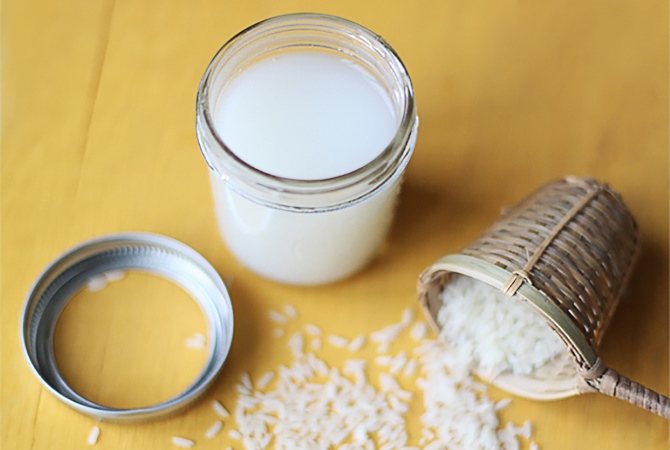
An important nuance when using pomegranate for a child is consultation with a pediatrician, since this product is considered an allergen.
Gray diarrhea: causes, symptoms and treatment
10.06.2018
Diarrhea is a restlessness caused by problems with the stomach. A dangerous symptom is gray diarrhea, which can signal the development of a serious disease. When it appears, you should immediately contact a therapist for a comprehensive examination. It is worth studying in more detail the cause and methods of treating this phenomenon.
What does the appearance of gray diarrhea indicate?
Often, gray loose stools are a harbinger of pathological phenomena in the liver and stomach. It may indicate a number of diseases.
In an adult
- Hepatitis;
- Gallstones;
- Inflammatory process of the digestive system;
- Reducing the level of acidity in the stomach;
- Inflammation of the mucous membrane of the large intestine;
- Disturbance in the production of digestive enzymes.
The child has
- Formation of parasites in the digestive tract;
- An infectious disease of a viral (rotavirus, adenovirus, enterovirus) and bacterial nature (escherichiosis, cholera, salmonellosis).
Important! The disease is always accompanied by accompanying symptoms: weakness, nausea or vomiting, fever, abdominal pain.
If you feel worse, you should immediately consult a therapist or pediatrician.
Causes
The appearance of gray diarrhea in a child and an adult is not always a sign of a serious illness. If anxiety manifests itself without accompanying symptoms, then its appearance is associated with a violation of diet or lifestyle.
The main reasons for changes in stool consistency in an adult are:
- Eating fatty foods in large quantities;
- Taking medications with antifungal or antimicrobial effects;
- Living in unsanitary conditions;
- Long-term treatment of gout;
- Allergic reaction to a food product;
- Treatment with antibiotics or laxatives;
The main reasons for changes in stool consistency in a human child are:
- Insufficient amount of lactose or poor absorption of this component. Mainly observed in newborns.
- Introduction of harmful foods into the diet.
- Violation of hygiene standards;
- Changes in climatic conditions;
Only a diagnostic examination will allow you to accurately determine the cause of concern.
Color and consistency
Normally, an adult's stool should have a dense consistency of light or dark brown. For a child, the norm is mustard or light cinnamon colored stool. Babies under one year of age often have loose stools, especially if they are fed breast milk. This is not a deviation.
The pathological process includes a change in the color and consistency of the stool, as well as the appearance of a sharp sour odor. The most dangerous phenomenon is stool with blood or mucus, which may indicate a serious inflammatory process.
Attention! The normal stool frequency for an adult and a child is 2-3 times. For children under one year old – up to 3-5 times a day.
Diagnostics
Gray diarrhea becomes a reason to visit a therapist's office. First of all, a set of diagnostic measures will be prescribed for the patient:
- During the first consultation, the specialist will conduct a survey in which he will learn about the consistency, color, frequency of stool and associated symptoms.
- The second important stage is the collection of tests for research: general analysis of blood, feces and urine;
- Based on the test results, the patient will be prescribed a colonoscopy, endoscopy, irrigoscopy or stool culture.
- If the test results are good, but anxiety continues, the patient will have to re-test the stool to determine the content of leukocytes and erythrocytes in it (coprogram).
Attention! The sooner the diagnosis is made, the faster the therapist will select the correct treatment. This will avoid complications.
Treatment
The method of treatment for gray or gray-green diarrhea in an adult or child depends on the results of the diagnostic test. Taking medications or using folk remedies will help you feel better.
Medicines
There are a number of drugs that restore the microflora and functioning of the stomach:
- "Acipol";
- "Loperamide";
- "Enterofuril."
It is required that the drug be prescribed by a specialist after identifying the cause of the ailment.
Traditional methods
Several centuries ago, diarrhea was treated only with herbal decoctions, due to which the stool became thicker and the functioning of the stomach was restored. Blueberries and bird cherry berries have a positive effect on the patient's condition. Preparation of a decoction from them consists of three main stages:
- You need to mix blueberries and bird cherry in a ratio of 3 to 2;
- Pour 1 tablespoon of fruit into 300 ml of boiling water;
- Boil the contents in a water bath for 25 minutes.
The cooled and strained decoction should be taken 1-2 tablespoons three times a day. The course of treatment ranges from 7 to 10 days. This method of treatment is not suitable for people with individual intolerance to the components and children under 4 years of age. In other cases, before treatment with folk remedies, you need to consult a specialist.
Diet
If you have diarrhea, be sure to drink plenty of fluids to avoid dehydration. Nutritionists and therapists have developed a number of prohibited and permitted products for stomach disorders.
| Authorized Products | Prohibited Products |
| cereals on the water | sweets and confectionery |
| boiled eggs | milk |
| steamed omelette | mushrooms |
| baked or boiled potatoes | peas |
| meat broth | fresh fruits |
| lean boiled meat | fried and smoked dishes |
| crackers | black bread |
For drinks, it is recommended to drink strong black and herbal tea. Prohibited drinks include freshly squeezed juice.
Possible complications
Diarrhea is a serious illness. It is important to start its timely treatment; if this is not done on time, a number of complications may appear:
- Lack of vitamins and important substances in the body.
- Development of hemorrhoids.
- Poisoning resulting from a violation of the composition of the microflora.
- Exhaustion of the body.
- Loss of body weight.
The most dangerous form of complication is dehydration, which can even lead to death.
On a note! Acute diarrhea kills 5 million people every year. This mainly happens to residents of underdeveloped countries, where there are no favorable living conditions and there is an acute shortage of medicines.
Preventive measures
Diarrhea is one of the most unfavorable worries that can completely disrupt a person’s plans. A number of preventive measures will help to avoid its occurrence:
- After coming from the street or public places, you must wash your hands thoroughly with soap. It is recommended to treat your palms with a disinfectant solution.
- Each product must be thoroughly washed before use or preparation, preferably additionally treated with boiling water.
- Every day you should drink a sufficient amount of pure liquid, approximately 30 ml per kilogram of weight.
- You should avoid contact with infected people.
- You should not buy food in dubious stores and visit public places that do not meet sanitary and hygienic standards.
- It is worth paying attention to the expiration date indicated on the product wrapper.
- It is required to regularly clean and ventilate the living space.
- It is not recommended to visit public places during the peak of viral diseases.
Diarrhea is one of the most common worries that almost every person has to face.
If it was not possible to avoid its occurrence, then it is worth taking all possible measures to eliminate it.
The best result can be achieved by a combination of proper nutrition and competent treatment, which can only be selected by an experienced specialist after a diagnostic examination.
Source: https://ponosanet.ru/ponos-i-diareya/seryy.html
Prevention measures
Prevention of diarrhea primarily comes down to observing the rules of personal hygiene and sanitary standards for food preparation:
- rational diet for a nursing mother;
- regular hygiene of the baby, baby’s room and toys;
- a careful approach to preparing food for a child;
- using only safe water and products to prepare food for the baby;
- compliance with the recommended frequency and volume of feedings for children of different ages.
White diarrhea is a symptom of an intestinal infection in the vast majority of cases. It is dangerous for both children and adults. Diarrhea can significantly worsen a child's health without proper treatment, so treatment should be started as early as possible.
Previous post How to take Polysorb for diarrhea?
Next entry Diseases that cause diarrhea and vomiting with bile





